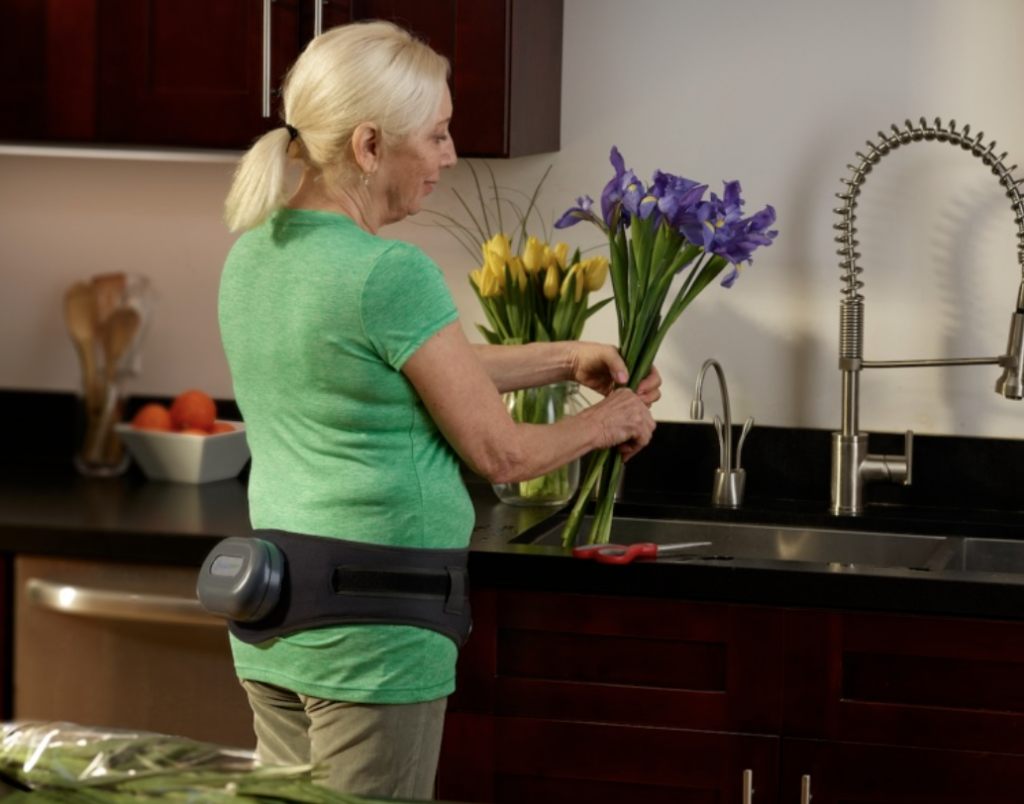
Bone Health Technologies (BHT) has announced that pre-orders are now open for Osteoboost, the first FDA-cleared prescription non-drug treatment for postmenopausal women with osteopenia. The device is expected to begin shipping in the next 60-90 days.
The prescription wearable device, worn around the waist, delivers targeted vibration therapy to the hips and spine – areas most susceptible to osteoporotic fractures. According to the company, clinical trials have shown the device’s patented combination of dynamically calibrated frequency and amplitude reduces the loss of spinal bone density by 85% and bone strength by 83%.
“Osteoboost was developed as part of an overarching vision to provide people with a safe, convenient, and non-invasive solution to protect bone density and prevent fractures,” said Laura Yecies, CEO of Bone Health Technologies. “This is an exciting milestone for our team and the thousands of people who have patiently waited as we have completed our clinical trial, successfully navigated the FDA clearance process, and begun manufacturing. We are deeply grateful for those who have taken this journey with us, and those joining us as we begin to ship devices to patients soon.”
The technology has received endorsement from medical professionals in the field. “Vibration therapy has shown promising results in clinical trials, offering a safe and effective way to encourage bone growth,” said Dr. Yevgeniya Kushchayeva, MD, an endocrinologist at USF Health Morsani Center for Advanced Healthcare and expert in bone density therapies. “The concept of using low intensity vibration to mimic the effects of exercise on bone remodeling has deep-rooted foundations in bone science. I like the approach Osteoboost has taken to deliver vibration therapy directly to the hips and spine, and the clinical trial results speak for themselves. I’m looking forward to seeing Osteoboost perform in the real world and tracking results with my patients.”
The company’s pivotal clinical trial, conducted at the University of Nebraska Medical Center, demonstrated the device’s effectiveness in slowing bone density and strength loss in the spine. Michael Jaasma, PhD, the company’s Chief Scientific Officer, explained the scientific approach: “The effects of vibration have long been studied for bone health. What has been missing is a rigorous, scientific approach to the development of vibration technology for commercial products. It matters where and how the vibration is applied. The biggest risks to older patients with low bone density are hip and spine fractures. This is why we were disciplined in our approach, investing the time to find the right level of vibration frequency and amplitude as well as the optimal device design to deliver therapeutic vibration to the hips and spine – where fractures often cost a patient their mobility or even life.”
The company reports that trial participants found the treatment convenient to incorporate into daily activities like walking the dog or household chores, comparing the sensation to a massage. A special Founder’s Program offer to existing waitlist members has already sold out, prompting the company to accelerate production to meet demand.



